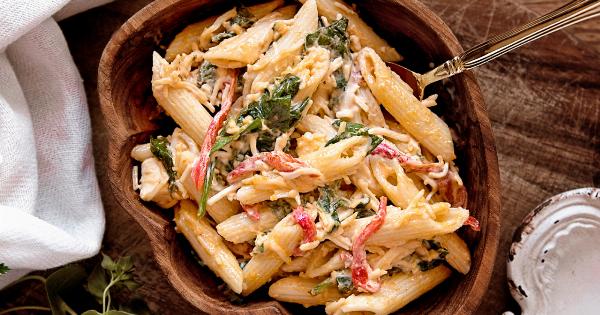When it comes to enjoying our favorite foods, getting the serving sizes just right can be a challenge. Whether it’s spaghetti, butter, meat, or ice cream, it’s important to have a clear understanding of how much we should be consuming.
In this article, we will delve into the ideal serving sizes for these indulgent treats, ensuring that you can enjoy them without any guilty feelings.
Serving Size for Spaghetti
Spaghetti, a beloved Italian dish, is often enjoyed in generous portions. However, it’s crucial to keep in mind the recommended serving size to avoid overindulgence.
A standard serving of cooked spaghetti is about 1 cup, which is roughly the size of a tennis ball. Pair it with a moderate amount of sauce and toppings, and you’ll have a perfectly portioned plate of spaghetti.
Serving Size for Butter
Butter, a staple in many kitchens, adds a rich and creamy texture to various dishes. However, it’s easy to go overboard and use more than necessary.
The appropriate serving size for butter is 1 tablespoon, which is equivalent to the size of your thumb. Whether you’re spreading it on toast or using it in cooking, sticking to this portion size will help you maintain a balanced diet.
Serving Size for Meat
Meat, being a primary source of protein, is an essential part of many diets. However, it’s important to be mindful of the serving sizes, especially when it comes to calorie-dense options like red meat.
The recommended serving size for meat is about 3-4 ounces, which is roughly the size of a deck of cards. Opt for lean cuts and pair them with plenty of vegetables to create a well-rounded meal.
Serving Size for Ice Cream
Indulging in a scoop of ice cream can be a delightful treat, but it’s crucial to keep an eye on portion sizes. A standard serving size for ice cream is around 1/2 cup, which is about the size of half a tennis ball.
This portion allows you to enjoy the creamy goodness without overwhelming your calorie intake. Adding fresh fruits or a sprinkle of nuts can help enhance the flavor while keeping the serving size in check.
Controlling Serving Sizes
Knowing the ideal serving sizes is one thing, but actually putting it into practice can be challenging. Here are some tips to help you control your serving sizes:.
1. Use Smaller Plates
One effective method to manage serving sizes is by using smaller plates. Research has shown that using larger plates can lead to overeating as we tend to fill up the plate regardless of the actual portion required.
By downsizing your plate, you can trick your brain into feeling satisfied with smaller amounts of food.
2. Measure Your Portions
Investing in measuring cups and a food scale can be incredibly helpful when it comes to controlling serving sizes.
While it might seem cumbersome at first, measuring your portions will give you a better understanding of what the recommended serving size actually looks like. Over time, you’ll become more proficient in visually estimating the right portion sizes.
3. Listen to Your Hunger Cues
Learning to listen to your body’s hunger cues is key to avoiding overeating. Often, we eat out of habit or due to emotional reasons rather than actual hunger.
Before reaching for another serving, take a moment to assess whether you’re physically hungry or if you’re simply looking for comfort or distraction. This self-awareness can prevent unnecessary overeating.
4. Practice Mindful Eating
Mindful eating involves savoring each bite and being fully present during meals. This practice can help you recognize your body’s signals of fullness and satisfaction.
By eating slowly, appreciating the flavors, and taking breaks between bites, you’ll develop a healthier relationship with food and be less likely to consume excessive amounts.
Conclusion
Maintaining appropriate serving sizes is essential to ensure a well-balanced and nutritious diet. By understanding the recommended portions for foods like spaghetti, butter, meat, and ice cream, you can enjoy these treats guilt-free.
Remember to control your serving sizes by using smaller plates, measuring portions, listening to your hunger cues, and practicing mindful eating. Enjoy your favorite foods in moderation and take pleasure in nourishing your body with the right quantities.





























